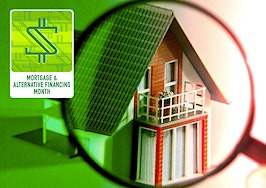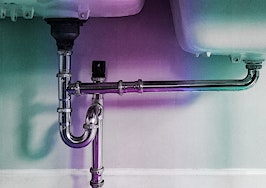 We want to help you make more money — right now. All month, go Back to Basics with Inman as real estate pros share what’s working now and how they’re setting up to profit in a post-pandemic world.
We want to help you make more money — right now. All month, go Back to Basics with Inman as real estate pros share what’s working now and how they’re setting up to profit in a post-pandemic world.
Congratulations! Your clients’ offer has been accepted, and your inspection contingency begins tomorrow when you open escrow. The clock will be ticking — what inspections have you booked?
My associates and I currently do around 12 inspections (when necessary) on properties in Los Angeles County. Why? To protect our clients. General inspectors are incredible, but they can’t possibly pinpoint all of the problems within a property. That requires supplemental expertise.
These additional inspections also provide the specific detail and documentation to support requested credits and repairs. That doesn’t guarantee the seller will pay, but it does provide a stronger case for your clients’ requests — particularly when health and safety hazards are discovered.
Irrespective of a seller’s moral compass, deal-breakers are often discovered that couldn’t be disclosed without a deeper examination of the property. I’ve found that when something major comes up in an inspection, the seller is genuinely surprised by it — and better the seller during inspections than your buyer after closing.
We rely on our general inspectors to determine the need for further investigation, and it has always paid off for our clients. From normalizing radon levels after mitigation to discovering foundation issues that canceled escrow, ordering subsequent inspections was the key.
Again, protecting our clients is paramount. Here is a list of inspections with a short description of what each is for.
- General: A visual inspection and comprehensive overview of a property and its condition.
- Termites: A visual inspection for evidence of wood-destroying insects.
- Sewer: A guided-camera inspection for evidence of cracks, clogs, roots, etc., in sewer line.
- Roof: A visual inspection of condition of roof.
- Chimney: A visual and guided camera inspection for evidence of structural damage and buildup.
- Pool or spa: A visual inspection of pool condition and mechanical processes.
- Asbestos/lead: A visual inspection and sample extraction to determine presence and levels.
- Radon: Testing devices placed within the property to determine radon levels.
- Structural: A visual inspection of condition and integrity of structures on a property.
- Foundation/drainage: A visual inspection to evaluate foundation integrity and moisture-related concerns.
- Geological: A visual inspection of grounds and slopes at a property.
- Mold: A visual inspection and sample extraction to determine presence and levels.
Useful inspection tips:
- When it looks like your offer could be accepted, begin to schedule your inspections. This may mean the difference between booking your preferred vendors and having to use someone you can’t vouch for.
- Cultivate your relationships with all vendors and their extended teams (office staff, assistants, admin, etc.). These people can make miracles happen if you treat them with the respect they deserve.
- Work with general inspectors you trust. At some point, they will recommend further inspections, and you’ll want to be confident when you tell your clients that it will be money well spent.
- Create a calendar with all inspection dates and times so that you can share it with all parties.
The inspection contingency period doesn’t need to be stressful (for agents, at least). Schedule the recommended inspections, provide the documentation when requesting credits and repairs, and rest easy. Because you know you’ll need your energy to convince your clients that everything will be OK.
Thomas Huisking is a global real estate advisor with Sotheby’s International Realty in Los Angeles, California. Connect with him on Instagram or LinkedIn.













